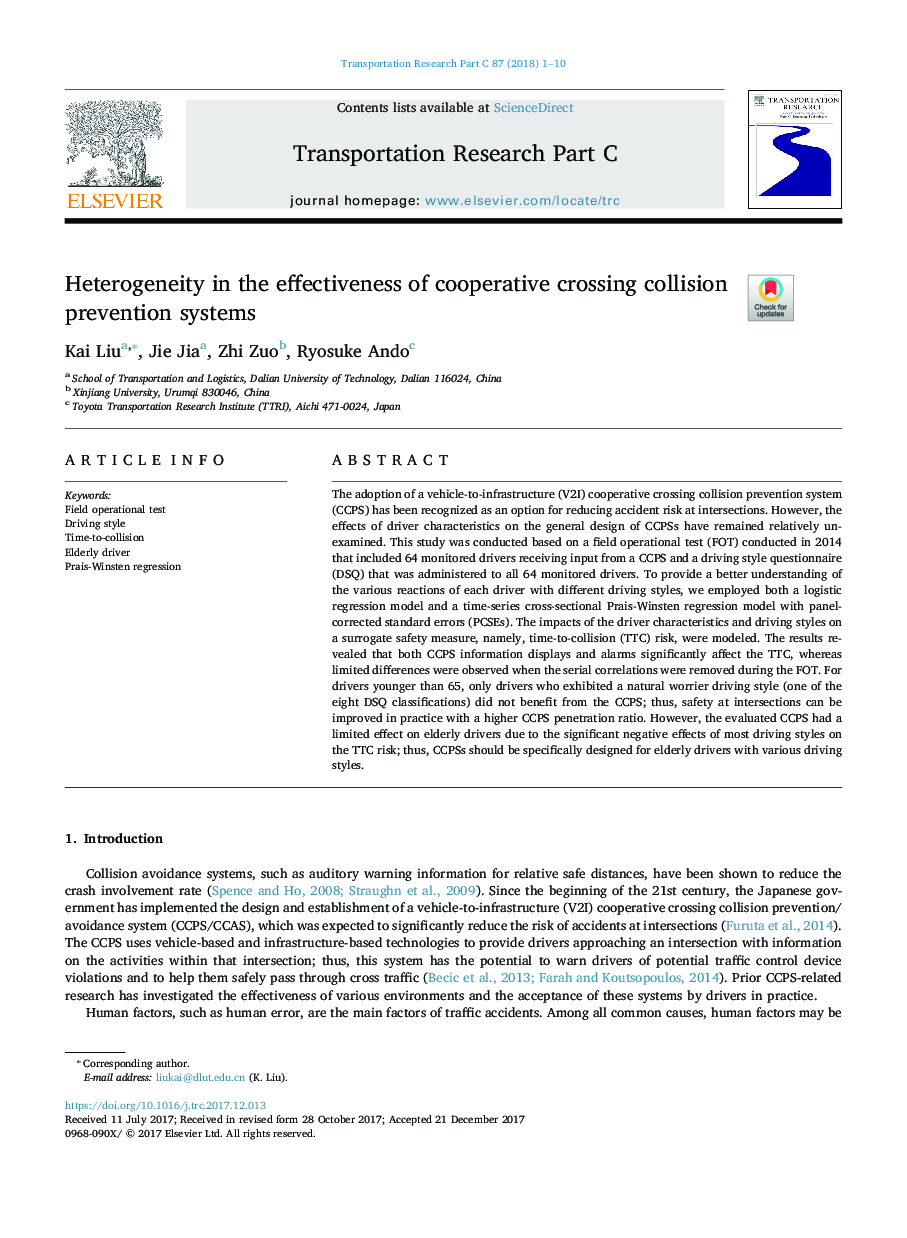| Article ID | Journal | Published Year | Pages | File Type |
|---|---|---|---|---|
| 6936154 | Transportation Research Part C: Emerging Technologies | 2018 | 10 Pages |
Abstract
The adoption of a vehicle-to-infrastructure (V2I) cooperative crossing collision prevention system (CCPS) has been recognized as an option for reducing accident risk at intersections. However, the effects of driver characteristics on the general design of CCPSs have remained relatively unexamined. This study was conducted based on a field operational test (FOT) conducted in 2014 that included 64 monitored drivers receiving input from a CCPS and a driving style questionnaire (DSQ) that was administered to all 64 monitored drivers. To provide a better understanding of the various reactions of each driver with different driving styles, we employed both a logistic regression model and a time-series cross-sectional Prais-Winsten regression model with panel-corrected standard errors (PCSEs). The impacts of the driver characteristics and driving styles on a surrogate safety measure, namely, time-to-collision (TTC) risk, were modeled. The results revealed that both CCPS information displays and alarms significantly affect the TTC, whereas limited differences were observed when the serial correlations were removed during the FOT. For drivers younger than 65, only drivers who exhibited a natural worrier driving style (one of the eight DSQ classifications) did not benefit from the CCPS; thus, safety at intersections can be improved in practice with a higher CCPS penetration ratio. However, the evaluated CCPS had a limited effect on elderly drivers due to the significant negative effects of most driving styles on the TTC risk; thus, CCPSs should be specifically designed for elderly drivers with various driving styles.
Related Topics
Physical Sciences and Engineering
Computer Science
Computer Science Applications
Authors
Kai Liu, Jie Jia, Zhi Zuo, Ryosuke Ando,
